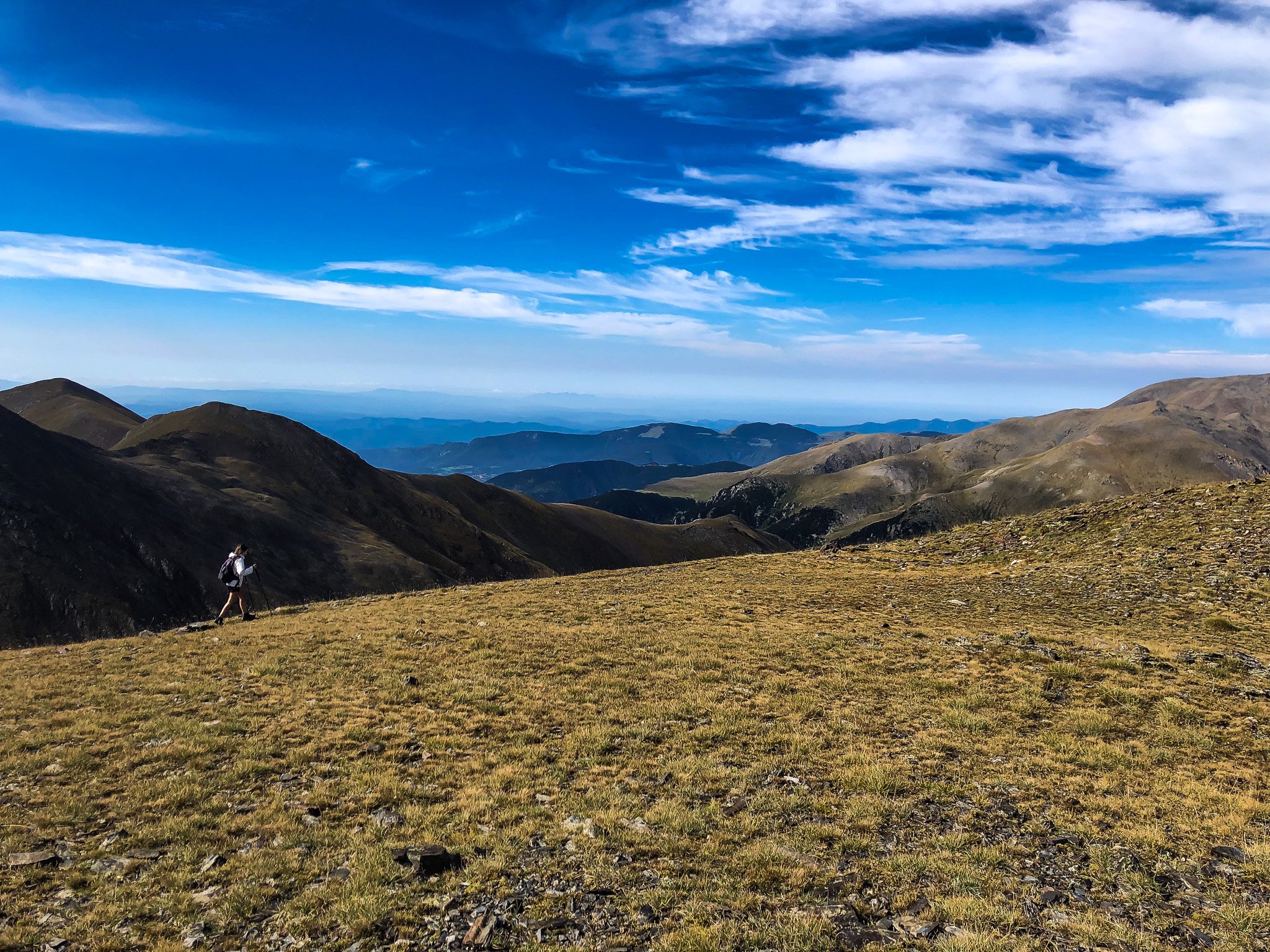
Whenever I feel like hiking solo, the Nuria Valley is my go-to destination. Just a two-hour train ride from Barcelona takes you to Ribes de Freser, the gateway to this breathtaking valley. A friend from Barcelona first introduced me this place, and since then, it has become a spot I return to year after year.
I feel completely at ease exploring the area alone. My favorite route starts with the Camino dels Enginyers, leading to Coma de Vaca, which you can accesss from Querabls. It’s quieter and less crowded comparing it to directly going to Nuria. Once in Coma de Vaca, I can decide whether to head to Nuria or Vallter 2000, with its trails leading to peaks like Pic de l’Infern. However, Coma de Vaca is known for its quickly changing weather. I’ve had moments when thick fog rolled in unexpectedly, making visibility nearly impossible. Thankfully, my familiarity with the area has helped me navigate through tricky situations.
On one occasion, heavy rain and low visibility left us stuck there forcing us to stay for the night, and another time, I faced hail while heading to Nuria. But these challenges are part of what makes the experience so memorable.
Conditons always make us change plan and be on a safe side. If I can, I prefer staying at the Ulldeter Refugio near Vallter 2000, for it is better equipped than Coma de Vaca. The food is better too. However, I once arrived there completely exhausted after a long hike from Gorg de Carrança, which I accessed from Thues, a small village in the French border. Reaching the hut just in time for dinner was a sigh of relief. It was a long day and having a place with hot food definitely helped recover quickly. Hikers stay here days to explore the peaks. Nowadays, I’m not sure if I can handle such demanding hikes, but the memories keep calling me back to explore again.
On my way back to Barcelona, I always stop in Ribes de Freser to enjoy its incredible Catalan cuisine and cold cuts to bring back home. It’s the perfect way to end a trip—great food and wine.
Hiking solo offers several advantages:
Personal Freedom: Solo hiking allows you to set your own pace and schedule, giving you the freedom to make spontaneous decisions and changes to your route without needing to consult or accommodate others.
Enhanced Connection with Nature: Being alone in nature can heighten your awareness of your surroundings. You can experience the sights, sounds, and smells more intensely without the distraction of conversation.
Self-Reliance and Confidence: Hiking alone challenges you to rely on your own skills and judgment, which can build self-confidence and a sense of accomplishment.
Mental Clarity and Reflection: Solo hiking provides an excellent opportunity for introspection and mental clarity. It can be a meditative experience, allowing for deep thought and personal reflection.
Flexibility: Without a group to consider, you can change your plans on a whim. Whether it’s taking a longer break, exploring a side trail, or deciding to hike further, solo hiking offers unmatched flexibility.
Minimal Distractions: Without companions, you can focus entirely on the hike and your environment. This can lead to a more immersive and peaceful experience.
Physical Challenge: Solo hiking can be more physically demanding, as you are responsible for all aspects of the hike, including navigation and carrying all your gear. This can provide a more robust physical workout.
Privacy and Solitude: Hiking alone allows for moments of true solitude, which can be refreshing and restorative, providing a break from the social demands of everyday life







